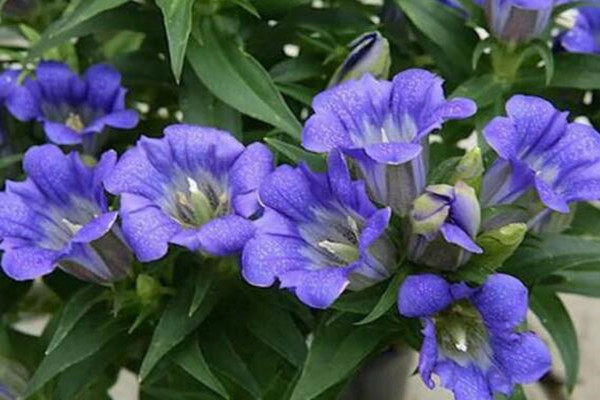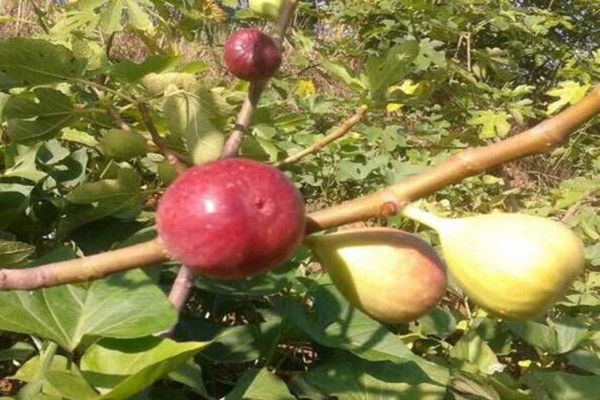Where is the origin of mini cucumbers? How to plant it? What are the effects and effects?
Mini-cucumbers are crispy and often eaten as fruits. It is only half the length of ordinary cucumbers. It has a succulent flavor and a strong cucumber flavor. Due to the melon small size, mini cute, favored by consumers. So, where does the mini cucumber come from? How to grow? What are the effects and functions?

Where does the mini cucumber originate?
Mini-cucumber origin: Holland, other European countries also have similar varieties of melon short, less than 15cm long; smooth surface, no thorns and no tumors; melon skin green, shiny. The female line has melons on each node.
How to grow mini cucumbers?
1. culture season
Spring crop seedlings in January to February, planting in February to March, harvesting in March to June; autumn and winter crop seedlings in August to September, planting in September to October, harvesting in October to April of the next year.
2. Cultivate healthy seedlings
(1) Substrate treatment: Mix the required substrate (peat: vermiculite: pearlite =1:1:1) evenly, stack 10-15cm high, spray 50 times formalin solution through the substrate, and then cover the substrate stack with clean plastic cloth. Generally, when the ambient temperature is 20-35℃, it is sealed for 3 days. When the ambient temperature is 10-20℃, it is sealed for 4 days. when the ambient temperature is lower than 10 DEG C, sealing for 7 days, opening the covered plastic cloth to cool in the sun, and finally loading the matrix into a tray.
(2) Soaking germination: first soak seeds in warm water of 55-60℃ for 10 minutes, disinfect seeds to kill pathogenic fungi and bacteria attached to the surface of seeds, and inactivate viruses inside seeds. Then clean, soak in warm water at about 25℃ for 4-6 hours, and then place it at 30℃ for germination. After 20 hours, the seeds can germinate, and it is better to sow with a bud length of about 5 mm. spray water through that substrate first, drill holes and sow seeds after the water seeps down. After sowing, cover 0.5-1cm thick mixture of peat: vermiculite =1:1.
(3) Seedling management: seedling stage generally use 1/2-1 dose of Japanese Yamazaki cucumber formula nutrient solution or 800 times compound fertilizer and 1000 times urea, water and fertilizer rotation, once every 2-3 days (adjust according to actual weather conditions). After the seedlings are fully grown, 500 times of carbendazim is sprayed once, and fungicides are sprayed once every 7 days to prevent diseases. According to the production experience, it should be mainly aimed at soil-borne diseases such as damping-off disease, whitefly and leaf miner. When a true leaf grows, it can be sprayed with aphids and green vegetables. Agricultural streptomycin can be used to irrigate roots of bacterial wilt.
3. colonization
The substrate can be peat: vermiculite: pearlite: dragon chaff ash =1:1:1. The substrate and facilities are sterilized first. Generally, the ground temperature can be planted at above 15℃. The seedlings are sprayed once 1-2 days before planting to facilitate the slow seedling. The planting depth should not be deep, and it is better to plant cotyledons about 5 cm away from the ridge surface. Two rows should be planted in each pond, the plant spacing should be 30cm, and 3000-3500 plants should be planted every 667㎡.
4. cultivation and management
(1) Light and temperature management: In summer, the greenhouse is sultry, affecting the growth and development of plants. Attention should be paid to ventilation, shading and cooling. The temperature should be kept at 25-30℃ during the day and 15-18℃ at night. The ground temperature should be kept at 21℃. In winter and spring, timely film sealing and heat preservation. When the temperature exceeds 35℃ in the later stage of growth, ventilation should be strengthened, and the film around the greenhouse can be opened for ventilation. Always keep the shed film clean and increase the transmittance.
(2) Nutrient solution management: 3- 5 days after planting, artificial irrigation of nutrient solution with drip irrigation should be carried out once a day in the morning and afternoon, 100-250mL/plant each time. After 3- 5 days, drip irrigation tube again, once a day, 500mL/plant each time, the specific amount depends on the weather and seedling growth. The nutrient solution is a modified formula based on the Japanese Yamazaki cucumber formula combined with the local water quality, and the pH value is between 5.6 and 6.2. From planting to flowering, ammonium nitrate 400mg/L should be added to the nutrient solution to supplement N. After flowering, the nutrient solution concentration should be increased to 1.2-1.5 doses. After fruiting, the EC value was about 2.4 ms/cm when the dosage of nutrient solution was increased continuously and potassium dihydrogen phosphate 30mg/L was added. Pay attention to regulating the balance between vegetative growth and reproductive growth. If the vegetative growth is too vigorous, reduce the dosage of potassium nitrate and add potassium sulfate to supplement the reduced potassium amount. The addition amount shall not exceed 100mg/L. Results The concentration of nutrient solution could continue to increase to 3.0 ms/cm in the peak period.
(3) Plant adjustment: When the plant grows to 4-5 leaves, start to hang the vine, leave the melon from the sixth node, remove the lateral branches and flowers at the 1-5 nodes in time, so that nutrients can be concentrated to supply the main vine, which is beneficial to the good development of fruits and the growth of the plant; At the same time, excessive leaves and senescent yellow leaves at the base should be knocked off to strengthen ventilation and light transmission and reduce disease occurrence. Lead tendril every 3 to 5 days, remove tendrils and abnormal melon at the same time, generally leave 1 to 2 melons per section, lateral branches can leave 1 leaf after peeling, reduce nutrient consumption, ensure commodity rate. When the plant is too high, remove the old leaves at the lower part, drop vines and dish vines.
(4) Pest control: The main diseases that harm mini cucumber are downy mildew, powdery mildew, gray mold, virus disease, angular spot disease, etc.; the main pests are thrips, aphids, American leaf miner, whitefly, etc. Cucumber downy mildew is the main disease of cucumber, which can be controlled by the following methods: 1. implement large temperature difference management, the highest temperature in the day is 33℃--35℃, and the temperature is reduced to about 13℃ at night. Second, the high temperature stuffy shed, the temperature rises to 40℃ above (someone must be observed) about 2- 3 hours (note the main points). III. Drug control: The occurrence of disease immediately spray control, available Pu Li Ke water agent, gold Lei Duo Mi Er, blue powder and frost Farley alternate use, at the same time combined with the afternoon use of 45% chlorothalonil smoke agent fumigation shed; pest control is best to use smoke agent, to reduce the humidity of the greenhouse, reduce the occurrence of diseases; In addition, urea 0.25kg+ sugar (brown sugar or white sugar) 0.50kg+ water 50kg, sprayed at the peak of cucumber growth, once every 5 days, for 4-5 times, the effect is good (this method can also add 0.3% potassium dihydrogen phosphate to enhance cold resistance, the effect is better).
5. timely harvesting
Harvested when flowers begin to wither. Picking once a day in cold weather during harvest period; picking once a day in the morning and afternoon if it is hot and hot. Cut off the handle with scissors or knife when harvesting, handle it gently, minimize the appearance scars caused by friction, ensure that the cucumber looks bright and has a good appearance, thus improving the commodity value. During transportation and storage, it should be covered with sterilized and moist cotton cloth to ensure that the melon strips are firm and fresh.
What are the effects and functions of mini cucumbers?
1. Mini-cucumber propanol and ethanol content ranks first in melons and vegetables, the main role is to inhibit the conversion of carbohydrates into fat, so there is a role in weight loss. Because it contains glucosides, fructose, mannitol, xylose and so on do not participate in the metabolism of sugar, so it is very suitable for diabetics to eat.
2. Mini cucumbers are sweet and cool. Can clear away heat and quench thirst, diuresis detumescence, clear fire and detoxification, reduce blood pressure and fat, improve arteriosclerosis. Mini cucumber has auxiliary hypoglycemic and weight loss effect.
How to choose mini cucumber?
Corrupt mini cucumber surface rough, melon skin surface covered with thorns, melon skin green yellow, luster dim.
Tips for making mini cucumbers
1. Cucumbers should not be eaten too much when they are eaten raw.
2. Cucumbers have fewer vitamins, so eat cucumbers often and eat other fruits and vegetables at the same time.
Time: 2019-03-22 Click:
- Prev

How about the cost and profit of planting one mu of gentian grass? Analysis on the planting benefit of Gentiana officinalis
Gentian, formerly known as gentian. Produced in Inner Mongolia, Heilongjiang, Jilin, Liaoning, Guizhou, Shaanxi, Sichuan, Hubei, Hunan and other places. Foreign countries are also distributed in the Soviet Union, Korea and Japan. So, how about the cost and profit of planting one mu of gentian? What is the planting benefit of Gentiana? What is the cost and profit of planting one mu of gentian?
- Next

How much is the price of fig seedlings in 2018? What are the prospects for fig farming? How much does it cost to plant an acre of figs
Fig is one of the fastest fruit trees in the world at present, and it has high yield, no big or small year, few diseases and insect pests, and easy cultivation and management. It is one of the best projects for large capital investment in agriculture. So, what is the price of fig seedlings in 2018? What are the prospects for fig farming? How much does it cost to plant an acre of figs?
Related
- Fuxing push coffee new agricultural production and marketing class: lack of small-scale processing plants
- Jujube rice field leisure farm deep ploughing Yilan for five years to create a space for organic food and play
- Nongyu Farm-A trial of organic papaya for brave women with advanced technology
- Four points for attention in the prevention and control of diseases and insect pests of edible fungi
- How to add nutrient solution to Edible Fungi
- Is there any good way to control edible fungus mites?
- Open Inoculation Technology of Edible Fungi
- Is there any clever way to use fertilizer for edible fungus in winter?
- What agents are used to kill the pathogens of edible fungi in the mushroom shed?
- Rapid drying of Edible Fungi

